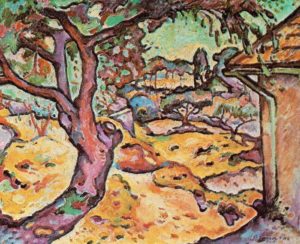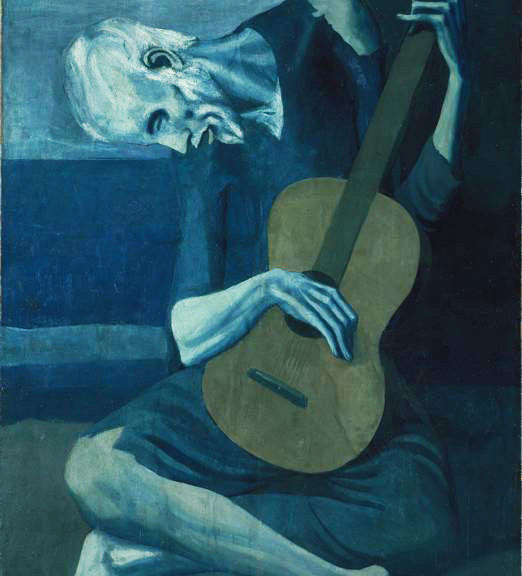Boats on the Beach – Georges Braque (1906)
My visit to the Los Angeles County Museum of Art really enhanced the overall appreciation of a wide variety of art master-pieces that were studied in class. One of the first things really caught my eye while wandering around the museum was that there is a noticeable color distortion that takes place when seeing an art piece in a book or a computer screen. In order to illustrate this point, I will reflect on the Fauvistic painting “Boats on the Beach” by the prominent, avant-garde artist Georges Braque (1906). Out of all of the paintings that I could have picked, I chose this one particularly because Fauvism is a movement that is characterized by the use of wide array of colors, and instinctive brush strokes. One of the first things I instantly noticed in this painting was that the aggressive, inconsistent brushstrokes create a sense of texture to the painting. This type of texture is hard to grasp on when seeing a virtual image of the painting.
It is also worth commenting that this work was developed during one of the early stages of Braque’s life, when impressionism can be accurately described as the “denier cri” of modern art. Nevertheless, despite presenting a lot of characteristics of a impressionist works (i.e. aggressive brush strokes, the impression of a dock on a peaceful beach, ect.), this work pushes the boundaries of what impressionism in itself by experimenting with all of the characteristics one would expect an impressionist work to have. After appreciating this work for quite some time, I noticed that the paintings of the expositions at LACMA were arranged in such a way that it allows for people to presence the evolution of modern art. It was almost like a timeline. This is important, but can nonetheless be shocking, especially because some of the cubist works that were placed right beside “Boats on the Beach” present a change in style that is nothing like the works he developed early during his life.

 Vs.
Vs. 
